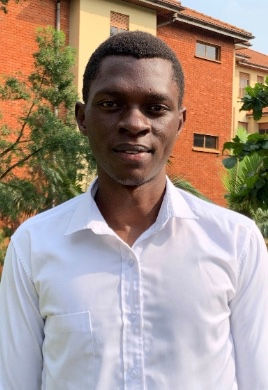Assessing Forest Cover Changes Using the Digital Earth Africa Sandbox: Budongo Central Forest
- Michael Jurua, Griffin Ainomujuni, Sheila Aceng, Jemimah Kasande, and Mathias Masaba- Makerere University
- Aug 23, 2023
- 4 min read
Background
The Geo YouthMappers chapter at Makerere University was privileged to be among the winners of the YouthMappers Technical Challenge 2022, in collaboration with Digital Earth Africa. As such, a team of five YouthMappers successfully carried out a project that identified deforestation hotspots over the Budongo Central Forest reserve situated in Masindi district, Uganda. The project was aligned with SDG Goal 15, Indicator 15.3.1. Digital Earth Africa is a platform that utilizes Earth Observation data to provide ready-for-analysis products across the African continent in order to address environmental, social, and economic challenges. The platform aims to leverage the existing capacity and provide open and free access to Earth Observation data for addressing key challenges in Africa.
Tropical forests, such as the Budongo Central Forest Reserve, are highly valuable ecosystems that provide numerous benefits, including carbon sequestration, biodiversity conservation, and natural resource provision, which significantly contribute to the sustainable development of nations. Consequently, it is imperative to monitor and control the degradation of these ecosystems to maintain their ecological integrity and maximize their potential contributions to environmental, social, and economic sustainability.
Study Area

Methodology
The project used the Digital Earth Africa Jupyter Sandbox to acquire and process high-quality and timeless satellite imagery of the Budongo Central Forest Reserve. The Sandbox was then used to detect and map regions of deforestation. Earth observation data is a cost-effective tool for contributing to the Global Indicator Framework, providing data on all scales over the entire African continent. An accuracy assessment was carried out to determine the reliability and quality of the information derived from remotely sensed data which involved collecting ground truth data.
Findings
The analysis revealed a moderate level of deforestation in the Budongo main forest block, with the highest forest cover loss in the north-eastern and southern parts of the forest. This trend is likely linked to the area's former status as a production zone, which may have led to continued forest resource extraction by local communities.
Deforestation rates were high in community forests dominated by Kasongoire. Significant losses in forest cover were also found in the Rwensama, Nyamugongo, and Kasokwa forests. These findings point to the growing population and consequent high demand for forest resources in the surrounding villages as the primary cause of the rampant deforestation. Encroachment by settlements has also led to deforestation in the edges of the Budongo Central Block, posing a threat to the existing forest if mitigation measures are not promptly implemented by the authorities.
The study also demonstrates the potential of the Digital Earth Africa Sandbox platform for effective forest monitoring and management. By providing free access to satellite imagery, vegetation indices, and data analysis tools, the platform can support evidence-based policy decisions and sustainable forest management practices. The findings of this study can inform policy and management decisions aimed at reducing deforestation in the Budongo Central Forest Reserve and other forest reserves in Uganda.

Conclusion
Overall, this study contributes to the growing body of literature on the use of remote sensing and digital technologies for forest monitoring and conservation and highlights the need for continued efforts to protect forests and mitigate the effects of deforestation.
We would like to acknowledge the following institutions for their support and contributions to this study: the Department of Geomatics and Land Management at Makerere University, the YouthMappers, the National Forestry Authority, Digital Earth Africa, Geoscience Australia, and the Budongo Conservation Field Station.
We also extend a special token of thanks to Prof. Anthony Gidudu, our faculty mentor for setting the leader dots that made this study successful.
About The Authors
Michael Jurua

Michael is a final year Geomatics student at Makerere University and the immediate Vice President of the Geo YouthMappers chapter. He is dedicated to using geospatial data to support disaster-prone communities in accessing the resources they need to adapt to environmental challenges. His research focuses on developing innovative solutions that promote sustainable natural resource management and advance principles of environmental justice.
Sheila Aceng

Sheila is a final-year Geomatics student at Makerere University, and a proud member of the YouthMappers. She is inquisitive, and motivated to find ways of using Geo-information to solve the world’s problems, most especially climate change. She looks forward to participating in more projects that will benefit the community.
Griffin Ainomujuni

Griffin is a final-year Geomatics student at Makerere University and an active member of the YouthMappers. He is committed to positively impacting communities by providing solutions to real-world problems using Geomatics techniques.
Mathias Masaba

Mathias is Final year student pursuing a Bachelor's degree of Science in Land Surveying and Geomatics at Makerere University and the former Public Relations Officer of the Geo YouthMappers Chapter. He is dedicated to using open-source tools and data to solve the real humanitarian problems.
Jemimah Kasande

Jemimah is a final-year Geomatics student at Makerere University and an active member of the YouthMappers with a strong passion for using geospatial technologies to create maps and gather data that can help solve problems in her community for a sustainable environment. She looks forward to promoting the use of geospatial technologies and sees her participation in the Geo Youth Mappers program as an important step toward achieving this goal.








Comments